Cathedrals of Desire
Costco is cheap. Convenient, even, but should it be the subject of fine art? Here, the aisles of Home Depot and Target are the landscapes of the 21st century.

Interview by Nicole Pasulka
How did you come to paint these big box stores?
When I was living in San Francisco I went to my first Costco in 2004. I was overwhelmed by it. It had an impact on me, but I didn’t quite know why. I painted it for a while as an emotional response, but then I didn’t know why I was painting it anymore. I stopped and I started working on landscape painting, which I do in general and has always been a lot about our relationship with our environment as well as the impact it has on our environment. Continue reading ↓
Cathedrals of Desire is on view at Jen Bekman Projects through June 5, 2011 and prints of her work are available for sale at 20 X 200. All images used with permission, © copyright the artist, all rights reserved.



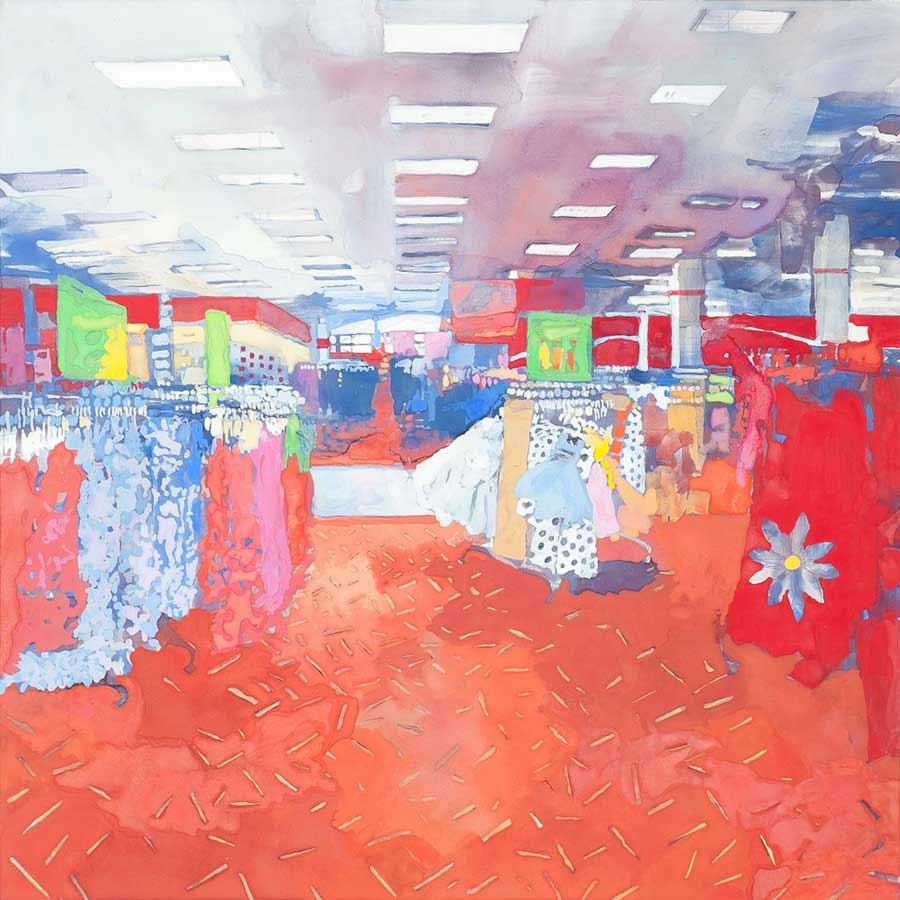
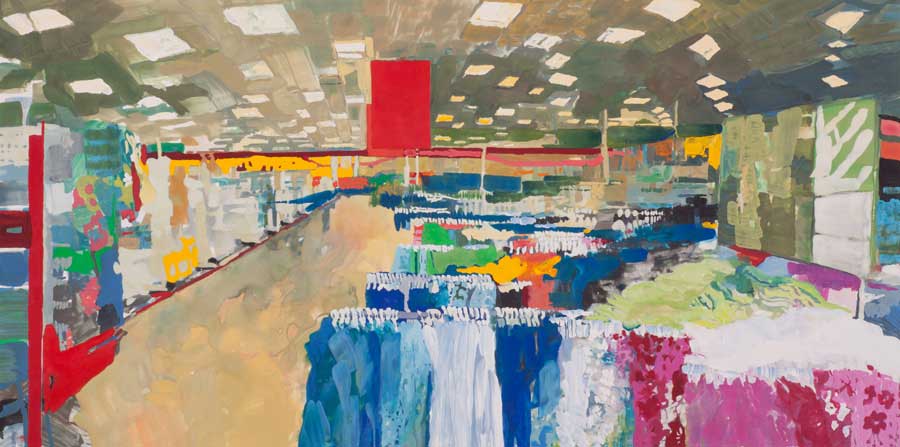
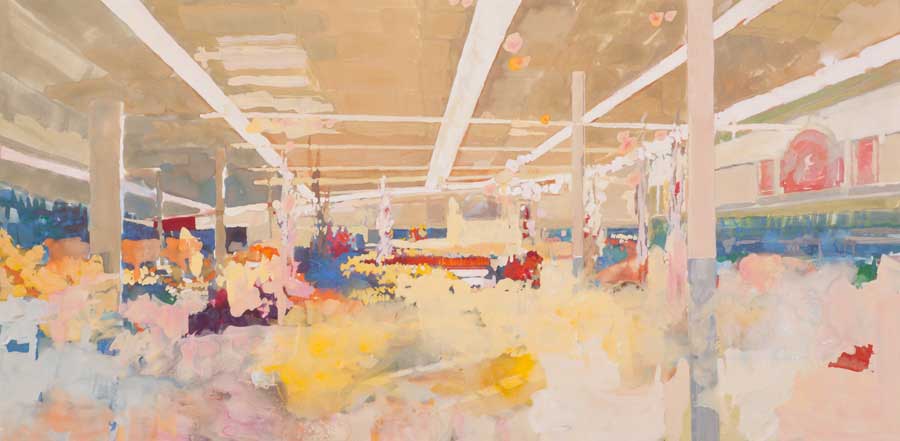
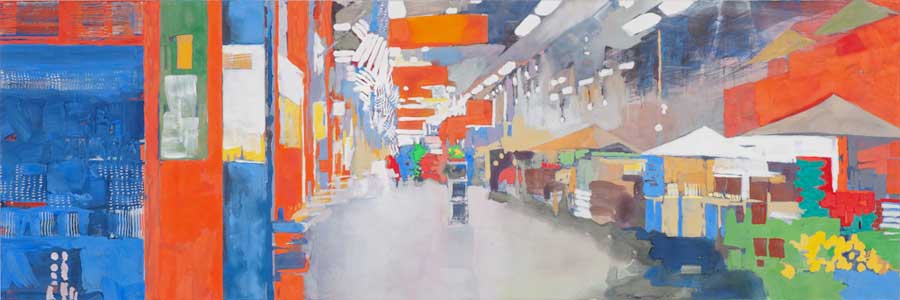
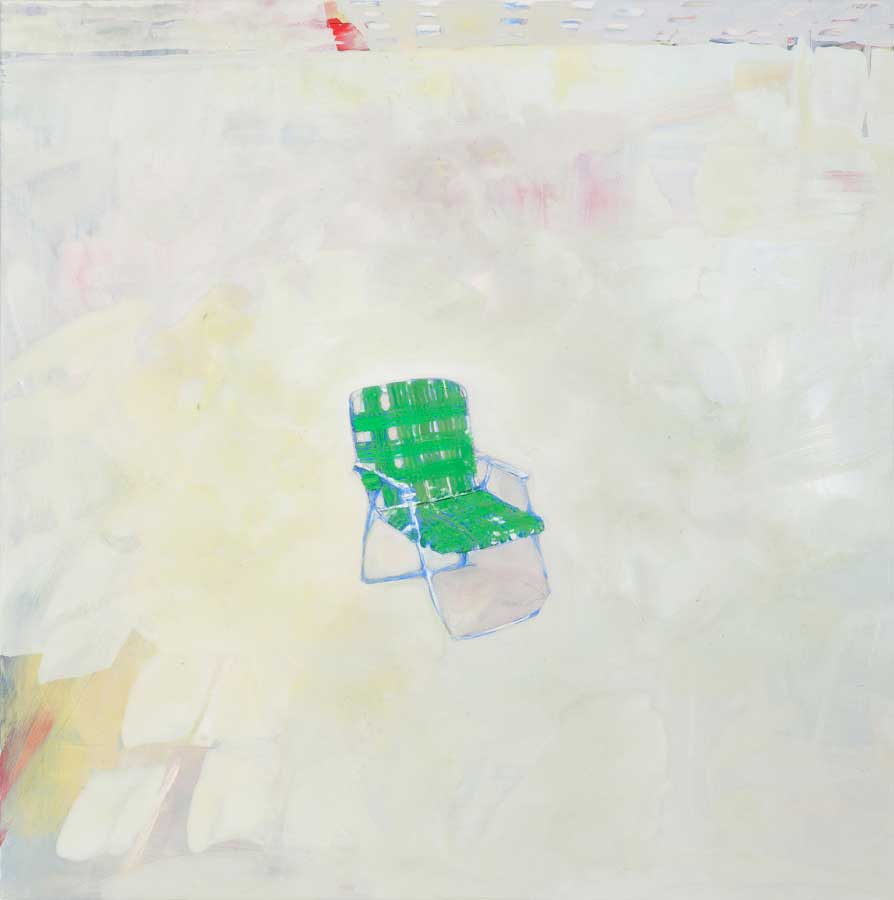
Interview continued
After I moved from San Francisco to Ohio, I saw there were big box stores everywhere. It really impacted me because I’ve been dealing with the exteriors of buildings. I had started kind of sending myself to my own MFA program and reading a lot about aesthetic discourse. I wanted to think more about the concerns of being a landscape painter. By moving to Ohio I was thinking a lot about the historical depiction of America, and applying ideas of the picturesque to the Rust Belt where I lived.
There’s something about these big box interiors that makes them seem like landscapes. Your field of vision is almost as far in a big box store as it is outside.
That’s kind of what I was thinking about. I find myself setting up the field of vision in the same way as I would with a landscape. You do whatever gets you off as a painter, but it’s also my experience with these places.
I lived in New Orleans for a while after being in New York City for 10 years and I was amazed at the difference in where people shop. Big box stores are a really big part of life there. Is that what life was like for you in Cleveland?
Here in Cleveland there are these mammoth buildings in the city that are beautiful, old, and historical that are gutted. But the tax breaks and developers keep going to suburban places to build more and more things that are huge—they’re taking up all the land, and as a landscape painter I’d been studying that. To see it in action and to see so much waste is an interesting part of the landscape. Also, I think my eyes were really fresh from being in San Francisco for 15 years.
What I like to look at is the experience of what’s familiar. A Costco really has a charm to it. But when I paint places like a Target—everything is in their colors, everything has to pop—I become more aware of the manipulations. At Costco they’re little vignettes—gingham check over a fancy table, things in that moment that are supposed to make you feel like home. That’s what I try to bring into the paintings.
How do you get the images? Do you sketch, photograph?
I photograph, and it’s so much easier now with an iPhone. In the past I’ve been kicked out of a lot of stores. They wouldn’t let me shoot anything in the stores with a camera, but with an iPhone I’m like, “Oh I’m just trying to take a picture of this cute couch.” I shoot a ton of source photos and then I go back to my studio and I separate them with why I shot them. Is this one about vernacular? Is this one capturing the spatial experience with the rafters, sky lights, and lights—is it getting more of the cathedral aspect?
Do people always want to tell you about their experiences at Home Depot?
It has been affecting people in a really interesting way. My friends who live in cities have seen these places, but they don’t experience them everyday, so for them it’s a little bit of a confession that they like these paintings. They also kind of love these stores because you don’t see them all the time.
My friends who live in Ohio or someplace where they have to experience big box stores all the time tell me they’ve never looked at them that way.
Do you see an analogy between the kind of overwhelmed emotional response people had to landscapes of rugged or unsettled terrain earlier and they way 21st century Americans feel about these stores?
The picturesque and the Hudson River Valley—a lot of those paintings were saying, “Look, our beautiful land is becoming farmland.” We look at them now and it’s like, “Look at that beautiful farmland.” I do try to capture place and time. Anything that I paint is usually about an American identity. That’s definitely what I’m looking for.
Are you still painting these stores?
My friend was joking that this is my baby. She saw me start these years ago. All along I didn’t know why, but this was something I needed to keep exploring. I see myself doing this for a long time. I haven’t hit the scale I’d like. I do the micro and the macro. The micro would be the vernacular, all of the different types of ways that the American experience is marketed. I have a lot of work ahead of me—a lot of shows ahead of me.
